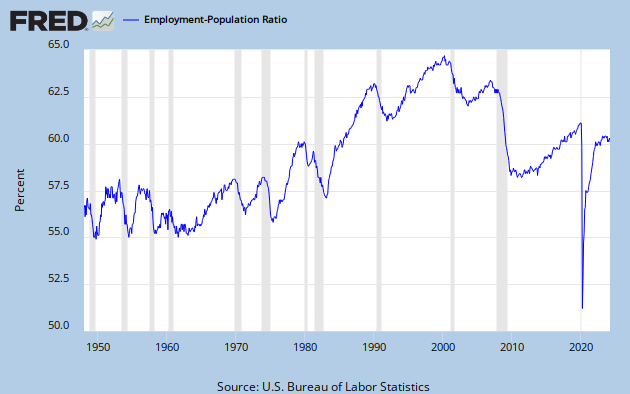More "recovery" news.....http://finance.yahoo.com/news/Retail-sales-fall-apf-1551827594.html?x=0
The one bright spot....if you think 17+ % unemployment is bright...Retail sales fall unexpectedly; jobless claims up
Retail sales drop 0.3 pct in December, plunge for year; new jobless claims rise
By Martin Crutsinger and Christopher S. Rugaber, AP Economics Writers , On Thursday January 14, 2010, 3:50 pm EST
WASHINGTON (AP) -- Retail sales unexpectedly fell in December, leaving 2009 with the biggest yearly drop on record and highlighting the formidable hurdles facing the economy as it struggles to recover from the deepest recession in seven decades.
In another disappointing economic report, the number of newly laid-off workers requesting unemployment benefits rose more than expected last week as jobs remain scarce.
Still, many economists, puzzled by the retail sales decline that follows reports from retailers of brighter holidays, cautioned that the December figures don't necessarily signal a big consumer pullback and could be a blip.
In the jobs report, the Labor Department said new claims for unemployment insurance rose by 11,000 to a seasonally adjusted 444,000. Wall Street economists polled by Thomson Reuters expected an increase of only 3,000.
The rise was partly a result of large seasonal layoffs in the retail, manufacturing and construction industries, a Labor Department analyst said. The second week of January usually sees the largest increase in claims, unadjusted for seasonal trends, during the year, the analyst said.
Let's hope that trend continues.Still, the increase didn't disrupt the longer-term downward trend in claims. The four-week average dropped to 440,750, its 19th straight drop and lowest level since August 2008.
Last edited:


 On the chart below notice how after Ovomit took office the seasonally adjusted line went from choppy to smooth & steeply up. Then for the first time in history on an unemployment spike the seasonally adjusted line went way above the actual not-seasonally adjusted line instead of holding below as it always has before. This scam was to make the headline number appear far worse than it actually was so he could blame it on Bush. Then he had VP Joe Biden go on TV & say "The economy is in much worse shape than we thought it was in" Then in March Obama has "The Working Group" buy the stock market up to 10,000 & holding. After that time the adjusted numbers go down against the unadjusted numbers to make unemployment appear to drop while it continued to climb. The discrepancy is the largest in history & is now up to 1 million.
On the chart below notice how after Ovomit took office the seasonally adjusted line went from choppy to smooth & steeply up. Then for the first time in history on an unemployment spike the seasonally adjusted line went way above the actual not-seasonally adjusted line instead of holding below as it always has before. This scam was to make the headline number appear far worse than it actually was so he could blame it on Bush. Then he had VP Joe Biden go on TV & say "The economy is in much worse shape than we thought it was in" Then in March Obama has "The Working Group" buy the stock market up to 10,000 & holding. After that time the adjusted numbers go down against the unadjusted numbers to make unemployment appear to drop while it continued to climb. The discrepancy is the largest in history & is now up to 1 million.